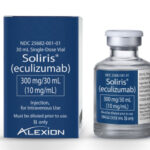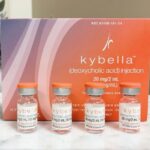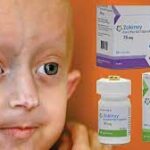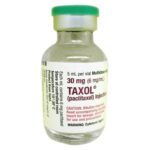Brineura: Uses, How it Works, Dosage, Side Effects, Cost
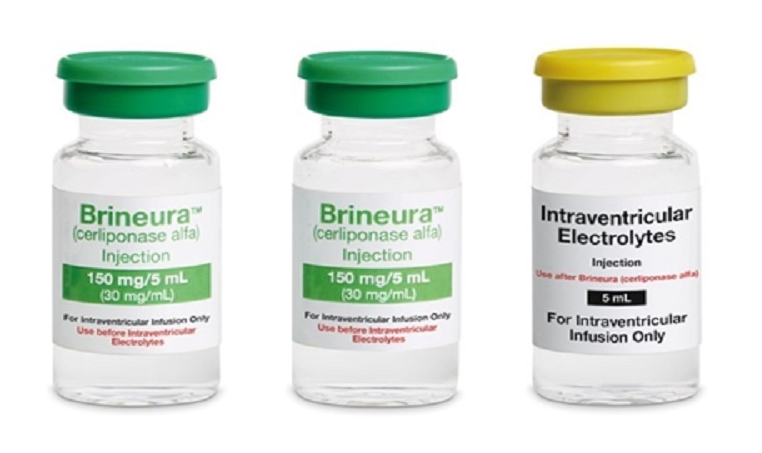
What is Brineura?
Brineura (cerliponase alfa) is a prescription medication used to slow loss of ability to walk or crawl (ambulation) in symptomatic pediatric patients 3 years of age and older with late infantile neuronal ceroid lipofuscinosis type 2 (CLN2), also known as tripeptidyl peptidase 1 (TPP1) deficiency.
Neuronal ceroid lipofuscinosis 2 (CLN2) is a type of neuronal ceroid lipofuscinosis (NCL), a group of severe diseases that affect the nervous system. Symptoms of the CLN2 generally develop between ages of two and four, although later onset cases have been reported. Children with CLN2 may experience speech delay, seizures that do not respond to medications, loss of muscle coordination (ataxia), muscle twitches (myoclonus), loss of vision, developmental delay, and intellectual disability. Symptoms of CLN2 worsen as the child gets older (progressive).
Who should not take Brineura?
• Patients with active intraventricular access device-related complications (eg, leakage, device failure, or device-related infection, including meningitis)
• Patients with any sign or symptom of acute or unresolved localized infection around the device insertion site (eg, cellulitis or abscess) or suspected or confirmed central nervous system (CNS) infection (eg, cloudy cerebrospinal fluid [CSF] or positive CSF gram stain, or meningitis)
• Patients with shunts used to drain extra fluid around the brain
How is Brineura administered?
Brineura is only given by infusion into the fluid of the brain (known as an intraventricular injection) and using sterile technique to reduce the risk of infection. An intraventricular access device or port must be in place at least 5 to 7 days prior to the first infusion.
- Prior to administration, it is important to discuss your child’s medical history with their doctor
- Tell the doctor if they are sick or taking any medication and if they are allergic to any medicines
What is the most important information I should know about Brineura?
Meningitis and other device-related infections: Intraventricular access device-related infections, including meningitis, were observed with Brineura treatment. Infections required treatment with antibiotics and removal of the access device. If any signs of infection or meningitis occur, contact your child’s doctor immediately. The signs and symptoms of infections may not be readily apparent in patients with CLN2 disease.
- Your child’s doctor should vigilantly be looking for signs and symptoms of infection, including meningitis, during treatment with Brineura.
- Your child’s doctor should inspect the scalp and collect samples of your child’s CSF prior to each infusion of Brineura, to check for infections and that there is no device failure.
- Signs of infection on or around the device insertion site may include redness, tenderness, or discharge
Device-related complications: such as device leakage, device failure, extravasation of CSF fluid, or bulging of the scalp around or above the intraventricular access device have occurred. In case of intraventricular access device-related complications, Brineura infusions may be discontinued.
Material degradation of the intraventricular access device reservoir was reported after approximately 4 years of administration, which may impact the effective and safe use of the device. During testing, such material degradation was recognized after approximately 105 perforations of the intraventricular access device. The intraventricular access device should be replaced prior to 4 years of single-puncture administrations, which equates to approximately 105 administrations of Brineura.
Cardiovascular side effects: Low blood pressure and/or slow heart rate may occur during and following the infusion of Brineura. Contact your child’s healthcare provider immediately if these reactions occur. As part of the infusion, the healthcare provider will monitor vital signs (blood pressure, heart rate) before infusion starts, periodically during infusion, and post-infusion, and assess the patient’s status after administration to determine if continued observation may be necessary. Additional monitoring is required for patients with a history of cardiac abnormalities. In patients without cardiac abnormalities, regular 12-lead electrocardiogram (ECG) evaluations should be performed every 6 months.
Hypersensitivity reactions including serious and severe allergic reactions (anaphylaxis) may occur. Symptoms of anaphylaxis may include fever, respiratory distress, rash, vomiting, and irritability, and may occur during treatment or within several hours of Brineura infusion. Seek immediate medical care should signs and symptoms of anaphylaxis occur. Your child may receive medication such as antihistamines before Brineura infusions to reduce the risk of reactions.
If anaphylaxis occurs, you and your child’s healthcare providers should consider the risks and benefits of readministration of Brineura. If the decision is made to readminister Brineura after the occurrence of anaphylaxis, the healthcare providers should ensure appropriately trained personnel and equipment for emergency resuscitation (including epinephrine and other emergency medicines) are readily available during infusion and will start the subsequent infusion at approximately one-half the initial infusion rate at which the anaphylactic reaction occurred.
The most common side effects reported during Brineura infusions included:
- Fever, problems with the electrical activity of the heart, decreased or increased protein in the fluid of the brain, vomiting, seizures, device-related complications, hypersensitivity, collection of blood outside of blood vessels (hematoma), headache, irritability, increased white blood cell count in the fluid of the brain, device-related infection, slow heart rate, feeling jittery, and low blood pressure
The risk information provided here is not comprehensive. Talk to your healthcare provider to learn more or for medical advice about any side effects.
You are encouraged to report negative side effects of prescription drugs to the FDA. Visit www.fda.gov/medwatch or call 1–800-FDA-1088.
How much does Brineura cost?
The cost for Brineura injectable kit (150 mg/5 mL) is around $29,335 for a supply of 1 kits, depending on the pharmacy you visit. Prices are for cash paying customers only and are not valid with insurance plans. This Brineura price guide is based on using the Drugs.com discount card which is accepted at most U.S. pharmacies.
| Quantity | Per unit | Price |
| 1 | $29,335.46 | $29,335.46 |
.

